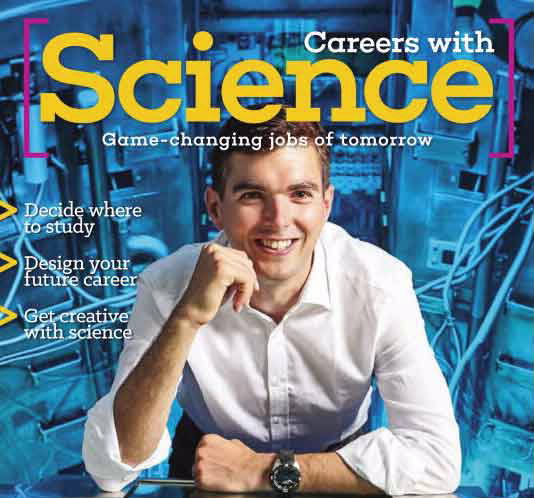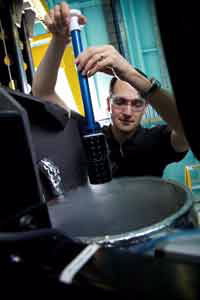
A number of ANSTO researchers have been featured in the 2016 issue of Careers with Science with the theme ‘game-changing jobs of tomorrow’.
CEO Adi Paterson provided an introduction urging high school students to consider a career in science and engineering to shape the future with new ideas and help tackle some of the world’s biggest problems with innovative solutions.
“We are entering an exciting new era for careers in science, technology, engineering and mathematics (STEM) in Australia,” said Paterson.
The publishers of Careers with Science were interested in showcasing the projects of researchers, whose projects might be a little out of the ordinary.
Environmental studies PhD student James Hooper (pictured above), who has used the resources of ANSTO’s Environmental Radioactivity Measurement Centre in studying the impacts of dust on ecosystems, is featured on the cover. His photograph was taken at the Discovery Centre leaning on the model of the OPAL research reactor. Hooper, who is an accomplished expeditioner, delivered a presentation at ANSTO last year for the Young Researchers Club.
 |
| Monika Markowska Photo: Lauren Trompp |
A profile of environment researcher Monika Markowska, who specialises in paleoclimatology, highlights aspects of her work monitoring and analysing drip water from speloethems in caves.
Projects undertaken using accelerator mass spectrometry, X-ray techniques and neutron scattering are captured in an article about the ‘Amazing jobs’ at ANSTO.
Radon researcher Scott Chambers, who has recently travelled to Antarctica to install a radon detector for a South Korean research facility, described his analysis of atmospheric radon and its role in monitoring climate.
Tom Caradoc-Davies (pictured below right), who is based at the Australian Synchrotron, shares his experiences as a beamline scientist, who studies the structure of proteins for medical research and other applications.
Dingo instrument scientist and science coordinator Joseph Bevitt relates some of his work of dinosaur fossils and neutron tomography imaging that can see inside fossils.
 |
| Tom Caradoc-Davies |
Published: 11/05/2016


